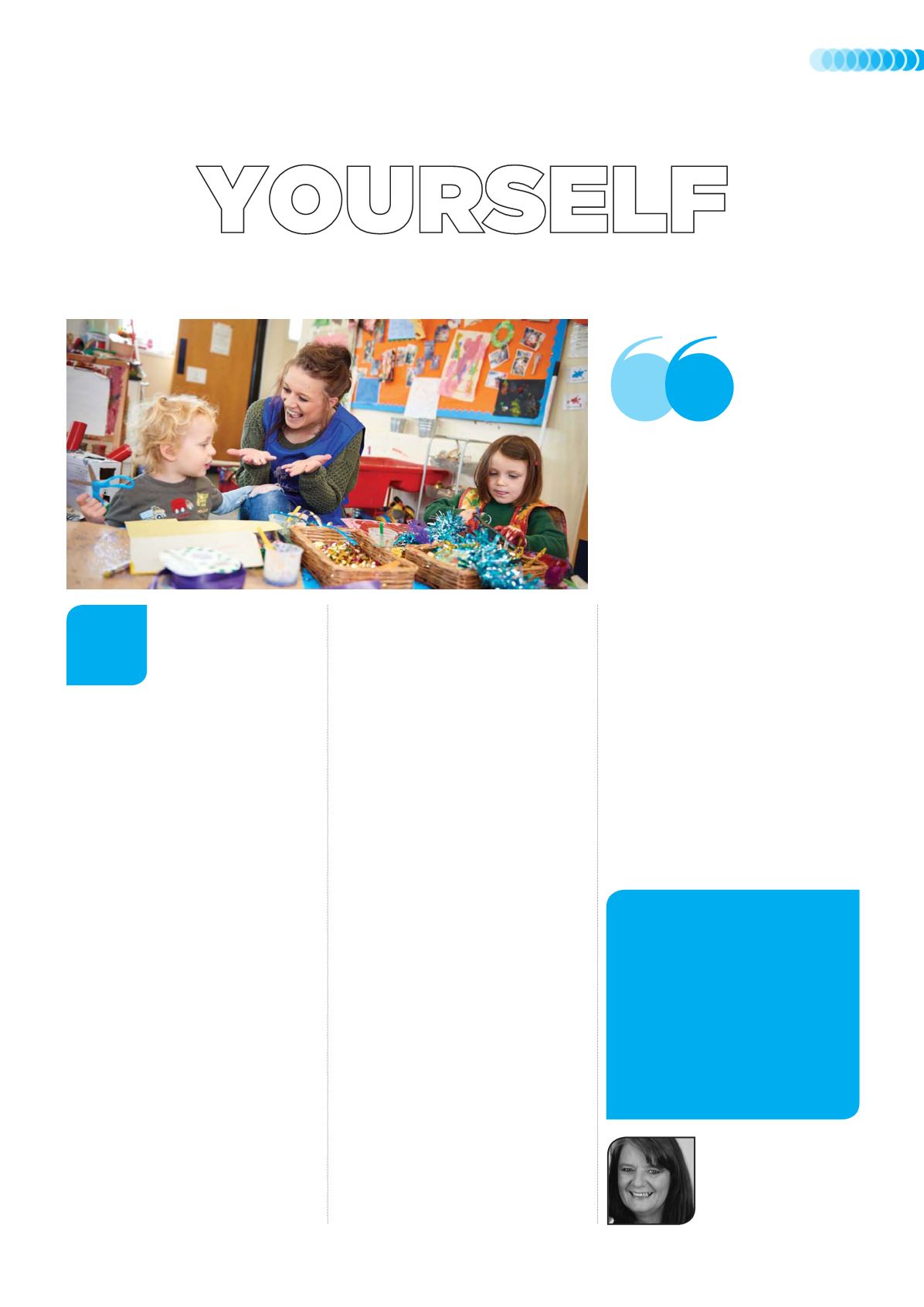
earlyyears.teachwire.net
81
roviding elements of your
training in-house offers
both a cost-effective
alternative to sending
staff members on external
courses, and a chance to tailor the
training to your setting’s individual needs
– you can ensure that all staff hear the
same message, and issues affecting your
nursery can be worked out as a team.
For in-house training to have an impact
you need to have a clear vision of what
you are trying to achieve. An action
plan for the year, including information
from management meetings, areas of
concern drawn from progress data and
areas for development identified from
staff reviews and appraisals, should give
you an overview of what areas your
setting needs to target and make training
worthwhile and relevant going forward.
UPSKILLING
YOUR TEAM
For owners/managers considering
in-house training I would recommend
sending staff on external training that
they have a personal passion for, and then
asking them to deliver the information
back to their colleagues as a prerequisite
to your investment in their training and
professional progression (enthusiasm is
infectious!). Hearing training information
from lots of different sources makes
staff meetings less tedious and gives
them a clear focus without the pressure
of responsibility falling on the same
shoulders. At the same time this will
build a shared sense of ownership and
respect for what you are all working hard
to achieve. It’s sensible to send two staff
members on training together so that they
can discuss it at source and then share
the load of redelivery to colleagues.
SOMETHING
FOR EVERYONE
If funds are really tight then you will have
to make sure that your own knowledge
and bank of ideas is up to date, whether
by attending courses, completing online
training or reading and following media.
Delivering these ideas to your staff needs
to inspire them and make sense in an
everyday situation. So once you have
your basic knowledge I would suggest
finding some practical examples of
activities that the rest of the staff can
use to get your point across – exploring
rainbow rice and cutting spaghetti as a
staff team has much more impact on their
understanding of fine motor development
than watching lots of PowerPoint slides.
Try to make sure that everything you
say is directly related to your setting,
and bear in mind that, like the children,
your staff will all have different learning
styles – hence try to include visual and
practical ideas as well as just talking.
Wherever possible aim to include some
aspect of movement into your training;
this engages your physical learners and
P
nursery business
holds the attention of other staff.
If the information you are trying to
get across cannot be easily turned into
a practical, fun example then try using
photos as a prompt for discussion – and
if all else fails, make up a quiz so staff
have a chance to discuss and develop
their knowledge in a fun way. Remember,
most in-house training is delivered after
a full day’s work, so you need to keep
your already-tired staff engaged and
focused. Try to get staff moving around,
even if it’s in between activities; this
breaks up the session, maintains people’s
interest and makes remembering
information easier.
TRAIN THEM
When money is tight, delivering CPD in-house is an effective way to
improve your practitioners’ skills, says
Kirstine Beeley
...
YOURSELF
Bear in mind that,
like the children,
your staff will all
have different
learning styles.
Kirstine Beeley is
an author and
educational
consultant. Visit
playingtolearnuk.com
If all else fails, or if you lack the
confidence to deliver training
yourself, why not consider
buying in a training consultant
to deliver training but offer paid
places to other settings within
your network or locality? By
charging a small fee you can
very quickly cover your own
overheads and build your own
reputation as a provider of high-
quality training locally.


